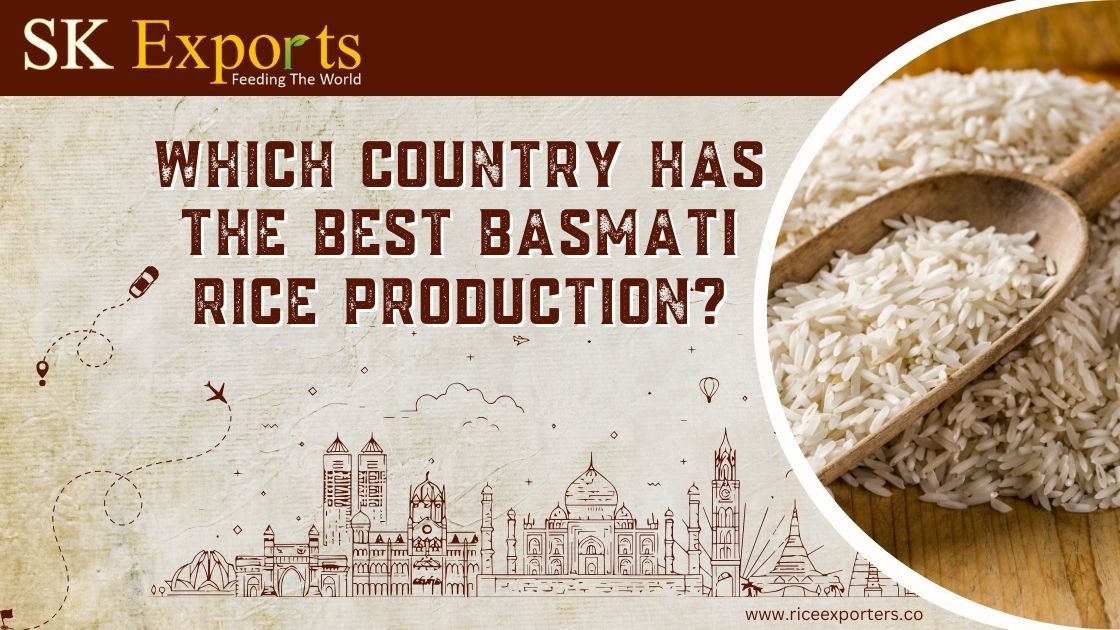Introduction:
Basmati rice, renowned for its fragrance, delicate texture, and elongated grains, holds a special place in the culinary world. With its origins in the Indian subcontinent, Basmati rice is now cultivated in several countries across the globe. However, the question remains: which country reigns supreme in Basmati rice production? In this comprehensive guide, we’ll delve into the top contenders and explore the factors influencing their Basmati rice cultivation.
1.India: The Pioneer of Basmati Rice
Indian Basmati rice varieties, including Basmati 370, Pusa Basmati, and Traditional Basmati, are revered for their long grains, distinctive aroma, and superior taste. The unique terroir of each region imparts distinct characteristics to the rice, further enriching its culinary appeal.
The Indian government, recognizing the economic importance of Basmati rice, has implemented policies to promote sustainable cultivation practices and maintain quality standards. Additionally, initiatives such as geographical indication (GI) tagging aim to protect the authenticity and origin of Indian Basmati rice, safeguarding its reputation in domestic and international markets.
Despite facing challenges such as water scarcity and climate change, India remains the leading producer and exporter of Basmati rice, catering to the diverse palates of consumers worldwide.
India Basmati Rice Production Overview Table:
| Region | Varieties | Annual Production (Metric Tons) |
|---|---|---|
| Punjab | Basmati 370, Pusa | 3,500,000 |
| Basmati, Traditional | ||
| Haryana | Basmati 1121, | 2,200,000 |
| Basmati 1509 | ||
| Uttar Pradesh | Pusa Basmati, | 1,800,000 |
| Sharbati | ||
| Total | 7,500,000 |
Comparison: India vs. Pakistan Basmati Rice Production (Chart): [Insert bar chart comparing annual Basmati rice production in India and Pakistan]
2.Pakistan: A Strong Competitor
Pakistani Basmati rice, notably varieties such as Super Kernel Basmati and PK-385, is characterized by its exquisite fragrance, slender grains, and exceptional taste. The country’s agricultural sector benefits from modern farming techniques and infrastructure investments, ensuring consistent quality and productivity.
Pakistan’s Basmati rice industry plays a vital role in the national economy, generating revenue through exports to countries in the Middle East, Europe, and beyond. Efforts to streamline production processes and adhere to international quality standards have further strengthened Pakistan’s position as a key player in the global Basmati rice trade.
With a focus on sustainable agriculture and technological innovation, Pakistan continues to expand its Basmati rice production capacity while preserving the authenticity and heritage of this prized crop.
Pakistan Basmati Rice Production Overview Table:
| Region | Varieties | Annual Production (Metric Tons) |
|---|---|---|
| Punjab | Super Kernel, | 4,000,000 |
| PK-385 | ||
| Sindh | Basmati 386, | 1,500,000 |
| Basmati 370 | ||
| Total | 5,500,000 |
3.Iran: A Rising Star
Iran has witnessed a surge in Basmati rice production in recent years, capitalizing on its favorable climate and agricultural practices. Regions such as Gilan and Mazandaran are renowned for producing premium Basmati rice, prized for its fragrance and texture.
Iranian Basmati rice, known for varieties like Domsiah and Tarom, is gaining recognition for its unique characteristics, including a nutty aroma and fluffy texture. Local farmers employ traditional methods such as flood irrigation and organic fertilization to nurture Basmati rice crops, ensuring optimal yield and flavor.
The Iranian government supports Basmati rice cultivation through subsidies and incentives, encouraging farmers to adopt sustainable practices and invest in modern farming technologies. As a result, Iran has emerged as a significant exporter of Basmati rice to international markets, competing with established players in the industry.
With a commitment to quality and innovation, Iran aims to further expand its Basmati rice production and strengthen its position as a leading supplier in the global marketplace.
Iran Basmati Rice Production Overview Table:
| Region | Varieties | Annual Production (Metric Tons) |
|---|---|---|
| Gilan | Domsiah, | 800,000 |
| Tarom | ||
| Mazandaran | Amol, | 600,000 |
| Ghaemshahr | ||
| Total | 1,400,000 |
4.Other Contenders: United Arab Emirates and United States
The United Arab Emirates (UAE) and the United States have also made strides in Basmati rice cultivation, albeit on a smaller scale compared to India and Pakistan. The UAE’s innovative farming techniques, coupled with its desert climate, have enabled successful Basmati rice production, catering to local demand.
In the United States, states like California have seen a rise in Basmati rice cultivation, catering to diverse consumer preferences and culinary trends. The fertile valleys of California provide an ideal environment for growing Basmati rice, with farmers implementing sustainable practices to optimize yield and quality.
While the UAE and the United States may not rival the production volumes of India and Pakistan, their contributions to the Basmati rice market highlight the global reach and versatility of this cherished grain. As consumer demand for premium rice varieties continues to grow, these countries play an essential role in meeting diverse culinary needs.
5.Factors Influencing Basmati Rice Production
Basmati rice production is influenced by various factors, each contributing to the quality and yield of the crop. Climate plays a crucial role, with Basmati rice thriving in semi-arid regions with warm temperatures and moderate rainfall.
Soil quality is another key determinant, as Basmati rice requires well-drained, fertile soil rich in organic matter for optimal growth and flavor development. Regions with sandy loam or clay loam soils are ideal for Basmati rice cultivation, providing the necessary nutrients and water retention capacity.
Traditional farming practices, passed down through generations, also contribute to the success of Bas
